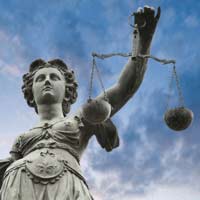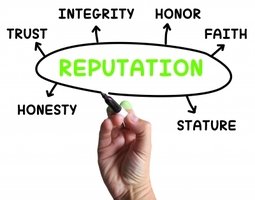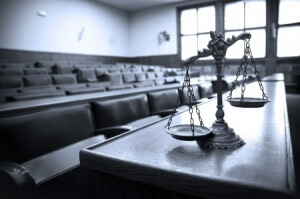
Using Trial Graphics to Strengthen Expert Witness Testimony
Looks Matter
Much like preparing a great dish, presentation in the courtroom is everything. Trial graphics is what brings the substance of an expert’s testimony to life and gives it meaning. More importantly, it is the most important (if not the only) nexus between an expert’s testimony and a juror’s understanding of that testimony. Without visual aids and illustrative evidence, jurors and even judges in some instances, would be lost as to the highly technical or scientific aspects of an expert witness’ explanation. As transportation planning and engineering expert Dr. Carl Berkowitz points out, visual aids contribute immensely to higher rates of both retention andcomprehension. However creating trial graphics to supplement an expert’s testimony and even further-integrating the trial graphics into the theory of the case involves a large of number of moving parts. So what does this process actually entail? Once an attorney has idea of what an expert’s testimony will be like, a team of trial graphics specialists puts into motion the process of bringing the testimony to life.
According to specialists at trial graphics companies like A2L Consulting and Trial Exhibits, Inc., an attorney typically brings in an expert after he or she has been deposed and an expert report has been disclosed to the court. An entire team then engages in a creative process to figure out all the logistics of the graphics to be used at trial- everything from font style to color to timing of animations. This involves a lot of back and forth between the attorney, expert and trial consultants who gage the expert’s testimony for direction in creating the graphics. A representative from The Focal Point, LLC., a trial consulting company that specializes in animations and illustrations shared with us a series of questions that experts are asked during the planning phase that are designed to get at the heart of the expert’s testimony. Some of these include for example:
- “What questions were you asked to answer when investigating as an expert?”
- “Why does this matter to the case?”
- “What did you do to get to your answer?”
- “How do you know your answer is correct?”
Asking questions such as these in the first instance lays a strong foundation for the graphics that will ultimately supplement the expert’s testimony and ensures that the trial graphics presented to the jury reflect exactly what the expert is saying, in a way that jurors will understand and remember.
Trial Graphics in Action
Attorney Alan LeVar shares an experience where the use of trial graphics was not only impactful on the jury, but essential to supplement the testimony of the trial expert in a personal injury case. “It was a personal injury case involving a truck accident where two truck drivers were run off the road by another truck. The problem was that the surgeons who treated the plaintiffs were based out of California even though the accident had occurred in Arkansas. We had deposed the surgeons about the details of the surgery and videotaped the deposition. So, at trial we presented both the deposition video for the jury as well as computer animated graphics to illustrate the more technical aspects of the surgeons’ testimonies. Not only did the visual aid make the surgeon’s testimony tantamount to his actual presence in the courtroom, it was key for engaging the jury and keeping their interest.”
Dr. Joshua Abzug
Specializing in pediatric orthopedic surgery, Dr. Abzug describes the utility of schematic drawings in cases where he’s testified. “The best examples of where these trial graphics were most helpful are in cases involving brachial plexus injuries. A juror looking at the schematic images now has a visual representation of the exact kind of stretching and tearing of nerves that caused the injury. In these instances, trial graphics are not only helpful but necessary for illustrating to the average person how something generic such as the tearing of nerves can cause such a specific injury in certain circumstances like child-birth.”
Trial consulting company A2L gives another example of how animations can be used contemporaneously with real video to provide a comprehensive “inside look” as to how injuries were caused in medical malpractice cases involving child-birth. The resulting graphic presented a video of the delivery side-by-side with an animation of what was occurringinternally so the jury could pinpoint how and when the doctor’s actions could have caused injury to the patient.
Trial Technician Nick Sacco
In a medical malpractice case involving the da Vinci Surgical System, this trial technician at Trial Exhibits, Inc. recounts a memorable case where a newer breed of trial graphic evidence made all the difference: “The machine itself was recreated as a 3D rendered model and the jury got to see exactly how such an instrument is used during surgery.” As mentioned above, 3D printing enables a replica of virtually any tangible object, instrument or even body part, illuminating any expert’s testimony. As medical malpractice suits increasingly involve the improper use of advanced medical technologies and machines such as the da Vinci Surgical System, the impact of using trial graphics on a jury to bring an expert’s testimony to life is far from minimal.
 In some instances, it may not be necessary to retain a trial graphics service if your expert comes equipped with his or her own. Seasoned obstetrics and gynecology expert Dr. Resad Pasic explains that he makes and uses his own graphics to illustrate the substance of his testimony after learning how to work with animations and images on his own. “A successful case that comes to mind is when I was an expert in a medical malpractice case involving a stomach injury. Using a schematic drawing I was able to show the jury exactly what I was describing about the use of the trocar in the abdominal cavity.” Some examples of these drawings are included below. In all instances where trial graphics are being used, make sure that there aren’t any admissibility issues surrounding the particular visual aids and graphics you intend to present to the jury.
In some instances, it may not be necessary to retain a trial graphics service if your expert comes equipped with his or her own. Seasoned obstetrics and gynecology expert Dr. Resad Pasic explains that he makes and uses his own graphics to illustrate the substance of his testimony after learning how to work with animations and images on his own. “A successful case that comes to mind is when I was an expert in a medical malpractice case involving a stomach injury. Using a schematic drawing I was able to show the jury exactly what I was describing about the use of the trocar in the abdominal cavity.” Some examples of these drawings are included below. In all instances where trial graphics are being used, make sure that there aren’t any admissibility issues surrounding the particular visual aids and graphics you intend to present to the jury.
 Though the trend insofar as the type of graphics used in a trial is oriented towards newer, more complex visual aids such as 3D animations and 3D printed replicas, transportation safety expert Dr. Carl Berkowitz describes a personal injury case that demonstrates the importance of choosing the righttype of visual aid. Sometimes, the newest isn’t always the best and it’s important to recognize the importance of more traditional trial graphics styles that have endured. “In a gap accident case involving the Long Island Railroad, we had enlarged photos of the physical gap between the platform and the train that was alleged to be the cause of the injury. By using such an enlarged two-dimensional image, the jury could first identify the exact location of the accident. The size of the gap was clear to the jury and they were in a much better position to determine that the gap was in fact dangerously large for any commuter.”
Though the trend insofar as the type of graphics used in a trial is oriented towards newer, more complex visual aids such as 3D animations and 3D printed replicas, transportation safety expert Dr. Carl Berkowitz describes a personal injury case that demonstrates the importance of choosing the righttype of visual aid. Sometimes, the newest isn’t always the best and it’s important to recognize the importance of more traditional trial graphics styles that have endured. “In a gap accident case involving the Long Island Railroad, we had enlarged photos of the physical gap between the platform and the train that was alleged to be the cause of the injury. By using such an enlarged two-dimensional image, the jury could first identify the exact location of the accident. The size of the gap was clear to the jury and they were in a much better position to determine that the gap was in fact dangerously large for any commuter.”
Diversity in Demonstration
In the above example, Dr. Berkowitz still however used other trial graphics such as animations to juxtapose his geometric analysis of the gap against the defendant LIRR’s analysis. The use of trial graphics in a case such as this demonstrates how having a diversity of visual aids to illustrate your expert’s testimony can impact the likelihood of success for your case. Trial graphics can also be utilized to present diverse pieces of evidence on one consistent and cohesive medium. A2L cites an example where many relevant pieces of evidence in a wrongful death case involving multiple instances of medical malpractice were presented as an electronic timeline, much like a slideshow. Described as an “interactive exhibit,” evidence like important photographs and documents were arranged on this panel so that jurors could see exactly what occurred with respect to the deceased individual on a certain date, or even gauge his condition as the trial expert gives his or her testimony.
A key aspect of putting together trial graphics to support an expert’s testimony is knowing what type of trial graphic to use. For example, our correspondent from The Focal Point describes trial graphics as in belonging to 3 general categories:
- Orienting graphics – used to illustrate what the expert did or was asked to do
- Tutorial graphics – designed to introduce or teach something to the jury
- Technical graphics – pictorial representations of quantitative data like graphs and charts
What makes it difficult is also what makes it somewhat fun; much like an artist’s canvas the choices and combinations of what types of graphics and colors to use are virtually limitless. However, the nature and style of an expert’s testimony will generally dictate the direction that trial graphics need to take.
There is an “i” in Team
An aspect of using trial graphics in a case that gets little mention but is of huge importance is the actual technology involved. iPads and iPhones dominate modern communication and as of late, apps designed for iPads and iPhones are revolutionizing the way evidence is presented in trial. Traditional courtrooms have come a long way (after hundreds of years) in finally being fit with equipment to accommodate different types of technology that may be used to present evidence during trial. Part of the “trial graphics team” discussed above includes a team of “trial technicians” or “hot seat operators”. These individuals not only scope the prospective courtroom for all the necessary amenities needed to connect your device and access your graphical evidence, they can also operate the equipment during trial, if necessary. For an in-depth look some great new apps for organizing and presenting trial graphics in your next case with an expert witness, look here.
5,000 Shades of Anything But Grey
Color choice is crucial in any type of trial graphic.The reason for this is simple- sight is one of our most relied upon senses and colors are always an intense stimulus. The role of color in trial graphics presented at trial warrant special mention here. In fact, there is an entire science dedicated to the “psychology of color.” Trial consulting companies that specialize in trial graphics often have a team of individuals that consult all kinds of qualitative and quantitative studies about the effects of colors on individuals. Certain colors evoke certain emotions in individuals and it is important to keep in mind that every single component of a trial graphic is carefully chosen based on this understanding. Jurors are human after all, and humans make decisions based on their emotions- even if subconsciously.
Judges in the Jury Box
Whenever we are dealing with an expert at trial, we are always dealing with fact-finders as the audience. Unless a special court proceeding or bench trial with only a judge, this audience is composed of a group of lay persons who are often very unfamiliar with the law and the substance of an expert’s testimony. The effectiveness and significance of an expert’s testimony is wholly contingent on how well the testimony was received by members of the jury. As we have discussed, visual aids are paramount in enabling jurors to understand difficult terms and concepts that are at the crux of an expert’s testimony. As a result, many of these trial consulting companies, like A2L, offer “jury-services” as they relate to the graphics used at trial such as mock trials and focus groups. These jury consultants hone in on the trial graphics to be used in the case and more importantly the interplay between the expert witness himself and the graphics that will be illustrating his testimony.
Conclusion
Without trial graphics to illustrate the complicated aspects of an expert’s testimony, the testimony is almost useless. Jurors can become easily bored and the most knowledgeable expert in the world can be of little help to your client’s case if the trier of fact doesn’t understand the facts, most especially in medical malpractice and personal injury cases. The digital age has enabled litigators to present testimony and evidence in ways never before contemplated and courtrooms have already started catching up. Because visual aids can have such a psychological impact, every component of any graphic used should be carefully considered. If expert witnesses are teachers, then trial graphics are the tools that enable the juror “students” to understand the material. Now, with the advent of new apps and technologies, supplementing expert testimony will undoubtedly bring into the courtroom some of the most creative trial graphics we have ever seen.
RELATED POSTS
3D Printing - A New Dimension of Expert TestimonyMining Expert Witnesses - 8 Tips to Maximize ValueExperts of the Future: 4 Areas of Emerging LitigationPreparing an Expert Witness for Trial Testimony - A Checklistand foremost, an expert’s job is to teach. If the courtroom were a classroom, than the expert is the professor and the jurors are the students. The true value of an expert’s testimony is its ability to help the jury understand the often complex and technical subject matter an expert is speaking about. The use of illustrative aids to supplement an expert’s testimony is by no means a novel concept- after all, a picture is worth a thousand words. However in recent years the use of trial graphics has taken traditional expert testimony to a new dimension (in some cases, quite literally), especially in medical malpractice and personal injury cases. From two-dimensional enlarged photographs to three-dimensional replicas, the use of trial graphics in the courtroom has come to play a central role in litigation and its impact on the jury cannot be overstated. This is because people, and therefore juries, love visuals. A number of factors such as the substance of expert testimony, quality and nature of the trial graphics needed, jury composition and even the psychology of color are all considered when creating dynamic visual aids to supplement an expert’s testimony in court.https://www.theexpertinstitute.com/using-trial-graphics-strengthen-expert-witness-testimony/







Comments